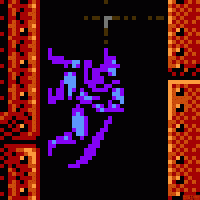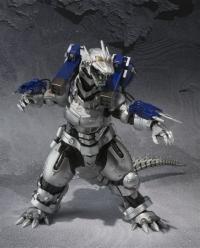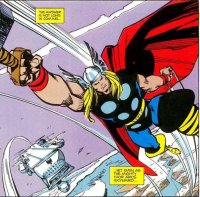The pitch for Clank sounds a little like the board game equivalent of magnetic poetry. A deck-builder? Combined with a dungeon-crawl? It feels focus-tested within an inch of its life. There are so many deck-builders and dungeon-crawlers out there that my eyes glaze over whenever I hear about new entries into either genre. That’s my excuse for why I gave Clank a pass for so long. I really only picked it up because it seemed like something I could play with my son, and because it is one of those games that has been extensively distributed in Asia. Most game stores here have several versions and expansions on their shelves, so it was only a matter of time. I’m glad I took the plunge, because while Clank doesn’t sound like anything fresh, it makes up for it by being well-executed, with a keen sense of what it wants to do and with few of the annoyances that dog either of its well-represented genres.
Chief among Clank’s many pleasures is how it handles deck-building. Ever since Dominion changed the hobby in 2008, deck-building has served as a genre that is best-suited to optimization. The whole mechanic is built around feedback loops. You keep adding cards to a deck that will allow you to execute some particular goal, usually to generate points. This boils down to a couple of key strategies that have always been key to deck-building. One is to identify a couple of cards that jive well together, and to hammer them to generate big combos. Another is to remove less efficient cards from the deck, making it more likely that the really good stuff is drawn. As a result deck-building has always favored experienced players, and punished people who have to shift strategies in mid-stream. Or at least that was my experience with Dominion, still the most popular deck-builder out there and one of the best in terms of polish.
Clank does require some of this stuff. In this game the cards generate four different resources, three of which you want. (We’ll talk about that fourth one in a minute.) Movement lets you travel deeper into the dungeon, while attacks let you defeat monsters along the way. Skill serves as the currency for buying new cards. You need to strike the right balance to get in and out of the dungeon with the most treasure. But Clank also doesn’t seem that interested in being an optimization exercise. There are a couple of stock cards that are always available, ensuring that you can always buy a card with more attack or more movement. But the more interesting cards are all in one big deck, with six available at any given time. There’s a decent chance you won’t see exactly what you need for sale, so it’s hard to build really killer decks. In a half-dozen games I have yet to find a card that isn’t at least pretty good for its cost, so it’s while it’s hard to build a deck that will wreck everyone it’s also pretty easy to build a half-decent one. There also aren’t many card effects that let you cycle cards in your deck endlessly, and even fewer that let you actually remove cards from your deck. As a result, you don’t go through your cards that quickly, and you can’t really fine-tune stuff on the fly.
This will drive some people crazy. Clank is not a game that is interested in tournament play. But the plus side is that most people will get what they need to do very quickly, and will have a decent shot at winning. It wants you to have fun right away, instead of insisting that you “git gud” before you figure out how to steal treasure. This laid-back feeling extends to its structure. Rather than there being a precise action and buying phase (think of the ABC turn from Dominion) you can just put all your cards out there and do all your things in whatever order you like.
As a dungeoncrawl, Clank draws the most from classics like Dungeonquest, albeit with much less interest in making the players lose. The shape of the game is almost identical though. Your adventurer needs to travel deeper into the catacomb, stealing as much treasure as possible then leaving before you get destroyed by the dragon. Remember that fourth resource generated by cards, the one you don’t want? That would be clank, a representation of noise made while shuffling around the dungeon. Expressed in colored cubes that sit in a pool on the board, every so often a card will trigger a dragon attack. When that happens, all those cubes go in a bag, and a few are drawn out that have the potential to become damage on a character. Some of the nicest cards generate a bit of clank as well, meaning that someone who buys all the best stuff will be more likely to suffer the dragon’s wrath. It’s not a punitive measure, but it’s definitely possible to overstay your time in the dungeon and to get yourself killed before you leave.
As a genre, dungeon crawls have had their problems. One big one is mess that can be generated with tons of wandering monsters. Clank sidesteps this by making monsters a type of card in main deck. When they come up they can be “bought” with attack, and immediately discarded for an instant benefit. Until then they can have adverse effects on the game state. It’s a really great way to make players want to fight monsters, and to give them a meaningful impact on the experience, while still avoiding clutter in the game state and in record-keeping. There are also “features,” isolated things in the dungeon like a shrine or a ladder, that are represented as cards in the deck as well. Like monsters, they are purchased and immediately discarded for an effect. The board itself is mostly just a network of locations. There are a couple of spots that hold artifacts, and collecting one allows you to leave the dungeon and trigger the endgame.
All of these different elements mesh together really well, and Clank does a great job at forcing the player to be good at a few different things. You do need to optimize your deck a bit, but you also need to know when to take a big risk, and when to admit that your plan just isn’t working. That it does all of these things without ever feeling burdensome is impressive indeed. Clank is the sort of game that looks like low-hanging fruit at first, but reveals a lot of smart design when you get into it. I can play it with my kids and with casual gamer friends, and more importantly, I really want to.
 Games
Games How to resolve AdBlock issue?
How to resolve AdBlock issue? 
























